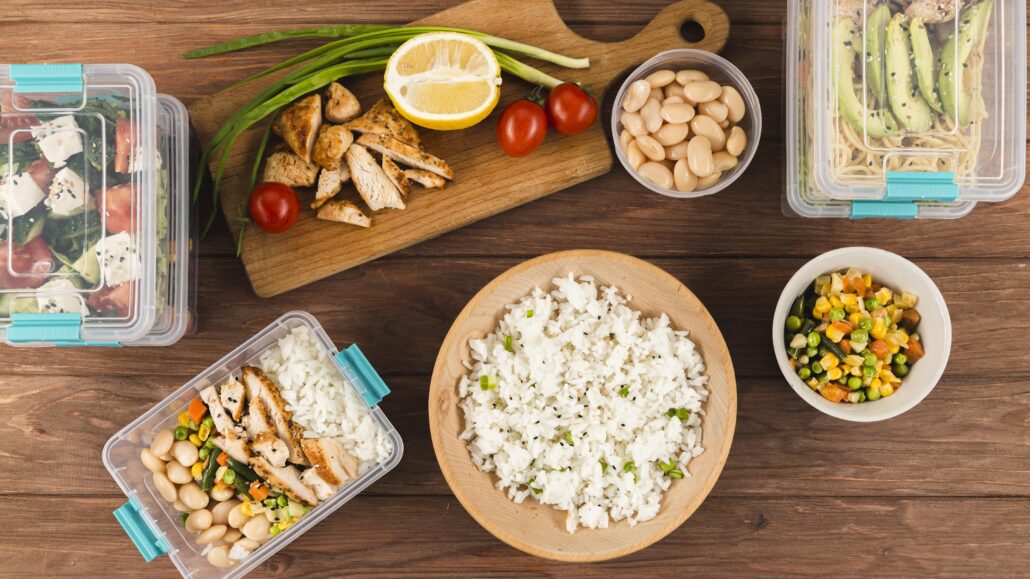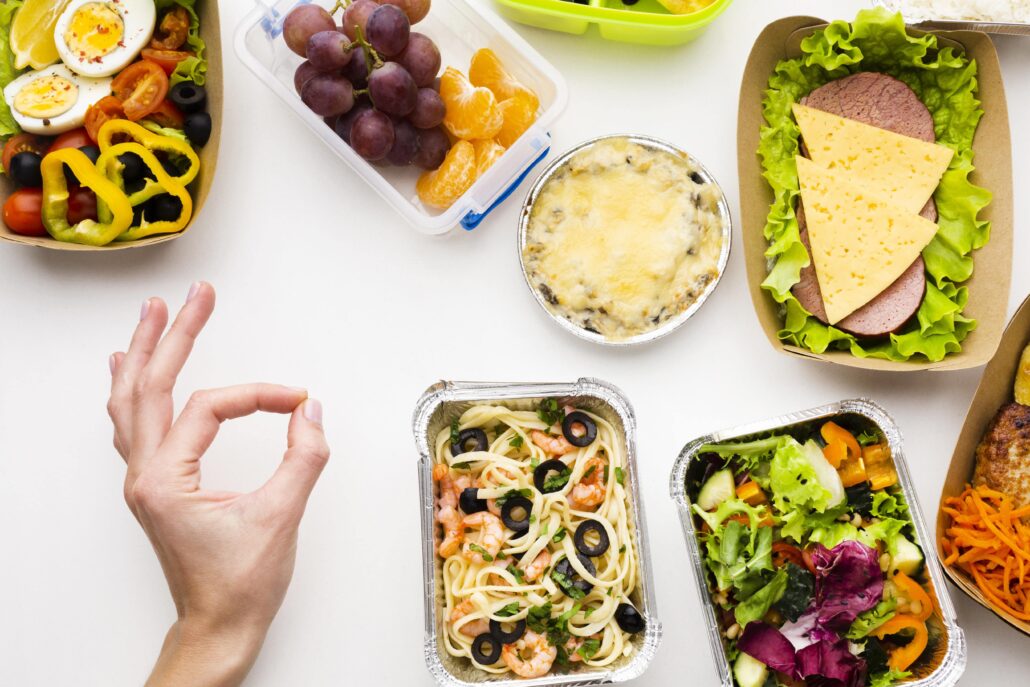
Outline of the Article: Ready-to-Eat Gluten-Free Meals
1. Introduction
- 1.1 What Are Ready-to-Eat Gluten-Free Meals?
- 1.2 Why Choose Ready-to-Eat Gluten-Free Meals?
- 1.3 Benefits of Ready-to-Eat Options
2. Types of Ready-to-Eat Gluten-Free Meals
- 2.1 Frozen Gluten-Free Meals
- 2.1.1 Popular Brands and Products
- 2.1.2 Tips for Choosing Quality Frozen Meals
- 2.2 Canned and Packaged Meals
- 2.2.1 Top Canned Gluten-Free Meals
- 2.2.2 How to Check for Gluten-Free Labels
- 2.3 Shelf-Stable Meal Kits
- 2.3.1 What Are Meal Kits?
- 2.3.2 Best Shelf-Stable Gluten-Free Kits
3. Nutritional Considerations
- 3.1 Balanced Nutrition in Ready-to-Eat Meals
- 3.1.1 Ensuring Adequate Protein and Fiber
- 3.1.2 Watching Out for Added Sugars and Sodium
- 3.2 Dietary Restrictions and Allergies
- 3.2.1 Common Allergens in Prepackaged Meals
- 3.2.2 Finding Allergen-Free Options
4. Cooking and Storage Tips
- 4.1 Proper Cooking Techniques
- 4.1.1 Microwave vs. Oven
- 4.1.2 Reheating Tips for Optimal Taste
- 4.2 Storage Recommendations
- 4.2.1 How to Store Frozen and Canned Meals
- 4.2.2 Shelf Life and Best Practices
5. Quick and Easy Ready-to-Eat Gluten-Free Meal Ideas
- 5.1 Breakfast Options
- 5.1.1 Gluten-Free Breakfast Burritos
- 5.1.2 Ready-to-Eat Oatmeal and Smoothies
- 5.2 Lunch and Dinner Ideas
- 5.2.1 Gluten-Free Pasta and Sauces
- 5.2.2 Hearty Soups and Stews
- 5.3 Snacks and Light Meals
- 5.3.1 Gluten-Free Snack Bars
- 5.3.2 Mini Meal Packs
6. Conclusion
- 6.1 Recap of the Advantages of Ready-to-Eat Gluten-Free Meals
- 6.2 Encouragement to Explore Options
7. FAQs
- 7.1 Can I Find Ready-to-Eat Gluten-Free Meals in Stores?
- 7.2 How Can I Ensure a Ready-to-Eat Meal is Truly Gluten-Free?
- 7.3 Are There Any Healthier Alternatives to Common Ready-to-Eat Meals?
- 7.4 How Do I Store Ready-to-Eat Gluten-Free Meals?
- 7.5 What Should I Look for in Terms of Nutritional Content?
Ready-to-Eat Gluten-Free Meals: Convenience Meets Health

Introduction
What Are Ready-to-Eat Gluten-Free Meals?
Ready-to-eat gluten-free meals are pre-prepared dishes designed for individuals who need or prefer a gluten-free diet. These meals are convenient, often coming in frozen, canned, or shelf-stable formats, and require minimal preparation. From savory dinners to sweet breakfasts, these options cater to various tastes and dietary needs.
Why Choose Ready-to-Eat Gluten-Free Meals?
Choosing ready-to-eat gluten-free meals offers several benefits. They provide convenience for busy lifestyles, ensuring you have a quick, gluten-free option without the need to cook from scratch. These meals are also great for those with dietary restrictions, making it easier to stick to a gluten-free diet while enjoying diverse and tasty foods.
Benefits of Ready-to-Eat Options
Ready-to-eat meals save time and effort, offering a quick solution for busy days or unexpected events. They also reduce the stress of meal planning and preparation, making it easier to maintain a gluten-free lifestyle. Additionally, these meals can be nutritionally balanced, providing essential nutrients while accommodating dietary needs.
Types of Ready-to-Eat Gluten-Free Meals
Frozen Gluten-Free Meals
Popular Brands and Products
Frozen gluten-free meals are widely available and include options like gluten-free pizzas, lasagnas, and breakfast burritos. Popular brands such as Amy’s Kitchen, Udi’s, and Sweet Earth offer a range of choices that cater to different tastes and preferences.
Tips for Choosing Quality Frozen Meals
When selecting frozen meals, look for recognizable brands with clear gluten-free labeling. Check the ingredient list for any hidden sources of gluten and opt for products with minimal additives and preservatives. Ensure the meal provides a balanced nutrition profile, including adequate protein and fiber.
Canned and Packaged Meals
Top Canned Gluten-Free Meals
Canned gluten-free meals can be convenient and shelf-stable. Options include soups, stews, and chili from brands like Progresso, Amy’s, and Campbell’s. These meals are ideal for stocking up and provide an easy solution for a quick meal.
How to Check for Gluten-Free Labels
Always check for gluten-free certification on canned and packaged meals. Look for labels that indicate the product is gluten-free and verify that there are no hidden gluten ingredients. Reading labels thoroughly helps ensure you’re choosing safe and appropriate products.
Shelf-Stable Meal Kits
What Are Meal Kits?
Shelf-stable meal kits include pre-packaged ingredients that you can assemble at home. These kits often feature gluten-free options, such as pasta dishes, rice meals, and more. They offer convenience and variety, allowing you to prepare a meal with minimal effort.
Best Shelf-Stable Gluten-Free Kits
Top options for shelf-stable gluten-free meal kits include Easy Gluten-Free Pasta, Rice-a-Roni’s Gluten-Free Variety, and Tasty Bite’s Indian Cuisine. These kits provide flavorful, easy-to-prepare meals that fit into a gluten-free diet.
Nutritional Considerations
Balanced Nutrition in Ready-to-Eat Meals
Ensuring Adequate Protein and Fiber
When choosing ready-to-eat gluten-free meals, ensure they offer adequate protein and fiber. Look for meals with lean proteins (such as chicken, fish, or legumes) and fiber-rich ingredients (like vegetables and whole grains) to keep your diet balanced and nutritious.
Watching Out for Added Sugars and Sodium
Be mindful of added sugars and sodium in ready-to-eat meals. Check nutrition labels to avoid excessive amounts of these ingredients, which can affect overall health. Opt for meals with lower sodium and natural sources of sweetness whenever possible.
Dietary Restrictions and Allergies
Common Allergens in Prepackaged Meals
Prepackaged meals can sometimes contain common allergens like dairy, soy, or nuts. Always check ingredient lists and allergen warnings to ensure the meal is safe for your specific dietary needs. Opt for products labeled as allergen-free if you have multiple sensitivities.
Finding Allergen-Free Options
Many brands offer allergen-free options designed for various dietary restrictions. Look for certifications and labels that indicate the product is free from specific allergens. Research brands known for their allergen-friendly offerings to find suitable options for your diet.
Cooking and Storage Tips
Proper Cooking Techniques
Microwave vs. Oven
Cooking methods for ready-to-eat meals often include microwaving or baking. Microwaving is convenient and fast, but oven cooking can sometimes enhance flavor and texture. Follow the instructions on the packaging for best results and optimal taste.
Reheating Tips for Optimal Taste
When reheating meals, ensure they are heated evenly. Stir or rotate dishes halfway through to avoid cold spots. Cover the meal while reheating to retain moisture and enhance flavor.
Storage Recommendations
How to Store Frozen and Canned Meals
Store frozen meals in the freezer and canned meals in a cool, dry place. Keep unopened cans and packaged meals at room temperature, but refrigerate or freeze leftovers after opening.
Shelf Life and Best Practices
Follow storage guidelines on packaging to ensure the best quality and safety. Frozen meals typically last several months, while canned and shelf-stable meals can last up to a year or more. Check expiration dates regularly to maintain freshness.
Quick and Easy Ready-to-Eat Gluten-Free Meal Ideas
Breakfast Options
Gluten-Free Breakfast Burritos
Breakfast burritos are a quick and satisfying option. Look for frozen or shelf-stable varieties that offer a mix of eggs, vegetables, and gluten-free tortillas. They’re easy to heat and perfect for busy mornings.
Ready-to-Eat Oatmeal and Smoothies
Gluten-free oatmeal and smoothies are great for a quick breakfast. Many brands offer instant oatmeal packets or ready-to-drink smoothies that fit into a gluten-free diet and provide essential nutrients.
Lunch and Dinner Ideas
**
Gluten-Free Pasta and Sauces**
Gluten-free pasta and sauces make for a simple lunch or dinner. Choose pre-cooked pasta and sauce options that are labeled gluten-free. Combine them for a quick, tasty meal that requires minimal preparation.
Hearty Soups and Stews
Canned or frozen soups and stews offer a comforting and easy meal. Look for options like chicken noodle soup or beef stew with clear gluten-free labeling. These are filling and can be enjoyed year-round.
Snacks and Light Meals
Gluten-Free Snack Bars
Snack bars are a handy option for quick energy. Brands like KIND, RXBAR, and Larabar offer gluten-free varieties that are both delicious and nutritious. They’re perfect for on-the-go snacking or a quick energy boost.
Mini Meal Packs
Mini meal packs include items like gluten-free crackers, cheese, and nuts. They’re convenient for a light meal or snack and can be easily assembled. Perfect for lunchboxes or quick breaks, these packs offer variety and taste.
Conclusion
Recap of the Advantages of Ready-to-Eat Gluten-Free Meals
Ready-to-eat gluten-free meals offer significant convenience, making it easier to stick to a gluten-free diet without sacrificing flavor or nutrition. From frozen dinners to snack bars, these options provide a range of choices for every meal and occasion.
Encouragement to Explore Options
Explore the wide variety of ready-to-eat gluten-free meals available to find what works best for you. With numerous brands and products to choose from, you’re sure to find options that fit your taste preferences and dietary needs.
FAQs
Can I Find Ready-to-Eat Gluten-Free Meals in Stores?
Yes, most grocery stores carry a variety of ready-to-eat gluten-free meals. Check the frozen food section, canned goods aisle, and shelf-stable products for options.
How Can I Ensure a Ready-to-Eat Meal is Truly Gluten-Free?
Look for gluten-free certifications on packaging and read ingredient lists carefully. Avoid products with ambiguous labeling or those that don’t explicitly state they are gluten-free.
Are There Any Healthier Alternatives to Common Ready-to-Eat Meals?
Yes, choose meals with lower sodium, no added sugars, and higher protein and fiber content. Opt for meals made with whole, natural ingredients for a healthier choice.
How Do I Store Ready-to-Eat Gluten-Free Meals?
Store frozen meals in the freezer, canned meals in a cool, dry place, and refrigerate or freeze leftovers after opening. Follow storage instructions on the packaging for best results.
What Should I Look for in Terms of Nutritional Content?
Check for balanced nutrition, including adequate protein, fiber, and healthy fats. Watch for high levels of sodium, sugars, and processed ingredients to make healthier choices.
